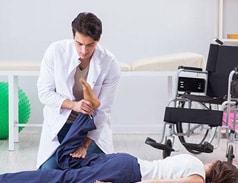Are you an avid netball player and worried about knee injuries? Or have had an injury in the past that you done want to repeat?
In this blog I’m going to talk to you about correct landing techniques and drills to help prevent knee injuries.
Knee and ankle injuries are the most common type of injury to occur in netball, making up 85% of total injuries. As females we are far more likely to rupture our ACLs than males, particularly in the 15-18 year old population. The ACL provides stability to the knee joint and in netball, ruptures make up nearly 20% of lower limb injuries.
The way you land contributes significantly to your risk of injury. Nearly 50% of injuries on the court are a result of landing. So it’s important to minimise the risk factors that can lead to injury.
If you’re not sure how you are landing, come see us at Miami Physio/Lakelands Physio and our expert physios will be able to assess your knee position when you are landing.
One typical injury pattern is when the knees drop inward on landing.
Some key tips to land correctly are:
+ make sure you bend your hips and knees
+ both feet are facing forward and are about shoulder width apart
+ knees remain in line with your feet
Obviously during a game situation this can be hard to achieve, but training drills are a great way to incorporate these correct techniques.
Our physios will be able to assess your knee position during different netball movements and teach you the best drills and exercises to correct your technique.
Some examples of drills include:
+ jump with 2 legs and land on one leg, holding a good solid land for two seconds, progress this by jumping forward and landing, or jumping from the side
+ In groups of three – catch a ball as another teammate gives you a nettle contact after you have pushed off. This can also be progressed to landing on one leg
If you have previously injured your knee, or want to prevent knee injuries during your netball career, get your landing position assessed and the training program you need to keep winning for your team.

